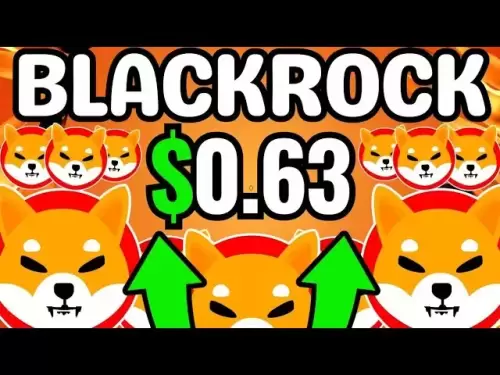-
 Bitcoin
Bitcoin $118000
-0.23% -
 Ethereum
Ethereum $3651
1.66% -
 XRP
XRP $3.423
-1.58% -
 Tether USDt
Tether USDt $1.001
-0.02% -
 BNB
BNB $742.8
0.69% -
 Solana
Solana $177.8
0.30% -
 USDC
USDC $0.9999
0.01% -
 Dogecoin
Dogecoin $0.2539
0.03% -
 TRON
TRON $0.3199
-1.74% -
 Cardano
Cardano $0.8382
0.59% -
 Hyperliquid
Hyperliquid $44.83
0.05% -
 Stellar
Stellar $0.4602
-1.49% -
 Sui
Sui $3.850
0.58% -
 Chainlink
Chainlink $18.62
2.56% -
 Hedera
Hedera $0.2681
0.97% -
 Avalanche
Avalanche $24.63
3.07% -
 Bitcoin Cash
Bitcoin Cash $522.5
0.96% -
 Shiba Inu
Shiba Inu $0.00001507
-0.80% -
 Litecoin
Litecoin $113.6
9.75% -
 UNUS SED LEO
UNUS SED LEO $8.994
0.24% -
 Toncoin
Toncoin $3.197
-0.43% -
 Polkadot
Polkadot $4.361
1.13% -
 Uniswap
Uniswap $10.45
1.41% -
 Monero
Monero $327.5
0.65% -
 Ethena USDe
Ethena USDe $1.001
-0.03% -
 Bitget Token
Bitget Token $4.992
-1.12% -
 Pepe
Pepe $0.00001355
0.67% -
 Dai
Dai $1.000
0.01% -
 Aave
Aave $322.6
0.15% -
 Bittensor
Bittensor $415.5
0.88%
How to trade Bollinger Bands breakouts in crypto
Bollinger Bands help crypto traders spot breakouts by signaling overbought or oversold conditions, with price closings beyond bands and volume spikes confirming high-probability setups.
Jul 15, 2025 at 10:28 pm

Understanding Bollinger Bands in Cryptocurrency Trading
Bollinger Bands are a popular technical analysis tool developed by John Bollinger. They consist of a middle simple moving average (SMA) and two standard deviation bands above and below it. These bands expand and contract based on price volatility, making them particularly useful for identifying potential breakout opportunities in the highly volatile crypto market.
In cryptocurrency trading, where price swings can be dramatic, Bollinger Bands help traders gauge overbought or oversold conditions, as well as periods of consolidation or explosive movement. When prices touch or move beyond the outer bands, it may signal an upcoming breakout or reversal, depending on the context.
Identifying Breakout Signals Using Bollinger Bands
A Bollinger Band breakout typically occurs when the price moves outside the upper or lower band. This is often interpreted as a sign of increased momentum. However, not all breakouts lead to sustained trends — some result in quick reversals.
To identify high-probability breakout setups:
- Look for price closing beyond the upper or lower band, not just a brief touch.
- Confirm with volume spikes — increased volume during a breakout increases its reliability.
- Watch for periods of contraction in the bands (known as "the squeeze") — this often precedes strong price moves.
It's crucial to remember that Bollinger Bands alone should not be used in isolation. Combining them with other indicators such as RSI or MACD can enhance accuracy.
Setting Up Entry Points for Bollinger Band Breakouts
Once a breakout has been confirmed, the next step is to determine when and where to enter a trade. Traders have several options:
- Enter immediately upon closing beyond the band, especially if accompanied by strong volume.
- Wait for a pullback to the middle SMA after the initial breakout — this can offer better risk-reward ratios.
- Use candlestick patterns like bullish engulfing or bearish engulfing near the breakout zone for added confirmation.
For example, if Bitcoin breaks out above the upper Bollinger Band with a surge in volume and closes above it, a trader might go long at the close of that candle. Alternatively, they could wait for a retest of the middle band before entering.
Managing Risk and Placing Stop Loss Orders
Risk management is essential when trading Bollinger Band breakouts. Given the high volatility in crypto markets, stop losses must be placed strategically to avoid being stopped out prematurely.
- For long trades, place a stop loss slightly below the recent swing low or beneath the lower Bollinger Band.
- For short trades, position the stop loss above the recent swing high or above the upper band.
- Adjust stop loss levels dynamically using trailing stops, especially during strong trending moves.
Position sizing should also align with your overall risk tolerance. A common rule is to risk no more than 1-2% of your account per trade, which helps preserve capital even during losing streaks.
Taking Profits and Exiting Trades
Profit-taking strategies depend on the trader’s style — whether they're scalping, day trading, or swing trading. However, some general rules apply when trading Bollinger Band breakouts:
- Take partial profits when the price reaches the opposite band — for instance, take profit on half the position when price hits the upper band in a long trade.
- Monitor for signs of overextension using RSI — if RSI exceeds 70 on a long trade, consider exiting.
- Use fixed risk-reward ratios such as 1:2 or 1:3 — if your stop loss is 50 pips away, aim for 100–150 pips in profit.
Traders should also watch for reversal candlesticks near profit targets or key resistance/support levels to decide whether to exit entirely or hold part of the position.
Frequently Asked Questions (FAQ)
What time frame is best for trading Bollinger Band breakouts in crypto?
The choice of time frame depends on your trading strategy. Day traders often use 1-hour or 15-minute charts, while swing traders prefer 4-hour or daily charts. Shorter time frames provide more signals but may include more noise, whereas longer time frames offer clearer trend direction.
Can Bollinger Bands be customized for different cryptocurrencies?
Yes, Bollinger Bands can be adjusted to suit different assets. Some traders modify the standard deviation multiplier (default is 2) or the SMA period (typically 20) to better fit the volatility of specific cryptocurrencies like ETH or SOL.
Why do Bollinger Band breakouts sometimes fail?
Breakouts can fail due to false signals, lack of volume, or sudden market sentiment changes. It's important to wait for confirmation and combine Bollinger Bands with other tools like support/resistance levels or volume analysis to filter out weak signals.
Is it possible to automate Bollinger Band breakout trading in crypto?
Yes, many trading platforms allow users to create custom scripts or bots that trigger trades when price interacts with Bollinger Bands. However, automation requires thorough backtesting and ongoing monitoring to ensure performance remains consistent across changing market conditions.
Disclaimer:info@kdj.com
The information provided is not trading advice. kdj.com does not assume any responsibility for any investments made based on the information provided in this article. Cryptocurrencies are highly volatile and it is highly recommended that you invest with caution after thorough research!
If you believe that the content used on this website infringes your copyright, please contact us immediately (info@kdj.com) and we will delete it promptly.
- Tea Rooms, Black Dogs, and Ghosts: A Spirited Brew in the UK
- 2025-07-20 12:30:12
- MogCoin and the Memecoin Mania: Price Gains and Cultural Shifts
- 2025-07-20 12:30:12
- Avalanche (AVAX) Eyes $35: Breakout or Bust?
- 2025-07-20 12:50:12
- XRP, Ozak AI, and the AI Token Revolution: What's the Buzz?
- 2025-07-20 12:50:12
- Bitcoin Mining Goes Mobile: Cloud Contracts & Daily Rewards in Your Pocket!
- 2025-07-20 12:55:12
- XRP, ATH, and Altcoins 2025: Is XRP Leading the Charge?
- 2025-07-20 13:00:13
Related knowledge

Advanced RSI strategies for crypto
Jul 13,2025 at 11:01am
Understanding the Basics of RSI in Cryptocurrency TradingThe Relative Strength Index (RSI) is a momentum oscillator used to measure the speed and chan...

Crypto RSI for day trading
Jul 12,2025 at 11:14am
Understanding RSI in the Context of Cryptocurrency TradingThe Relative Strength Index (RSI) is a momentum oscillator used to measure the speed and cha...

Crypto RSI for scalping
Jul 12,2025 at 11:00pm
Understanding RSI in the Context of Crypto TradingThe Relative Strength Index (RSI) is a momentum oscillator widely used by traders to measure the spe...

What does an RSI of 30 mean in crypto
Jul 15,2025 at 07:07pm
Understanding RSI in Cryptocurrency TradingRelative Strength Index (RSI) is a momentum oscillator widely used in cryptocurrency trading to measure the...

What does an RSI of 70 mean in crypto
Jul 13,2025 at 06:07pm
Understanding the RSI Indicator in Cryptocurrency TradingThe Relative Strength Index (RSI) is a widely used technical analysis tool that helps traders...

Does RSI work in a bear market for crypto
Jul 16,2025 at 01:36pm
Understanding RSI in Cryptocurrency TradingThe Relative Strength Index (RSI) is a momentum oscillator used by traders to measure the speed and change ...

Advanced RSI strategies for crypto
Jul 13,2025 at 11:01am
Understanding the Basics of RSI in Cryptocurrency TradingThe Relative Strength Index (RSI) is a momentum oscillator used to measure the speed and chan...

Crypto RSI for day trading
Jul 12,2025 at 11:14am
Understanding RSI in the Context of Cryptocurrency TradingThe Relative Strength Index (RSI) is a momentum oscillator used to measure the speed and cha...

Crypto RSI for scalping
Jul 12,2025 at 11:00pm
Understanding RSI in the Context of Crypto TradingThe Relative Strength Index (RSI) is a momentum oscillator widely used by traders to measure the spe...

What does an RSI of 30 mean in crypto
Jul 15,2025 at 07:07pm
Understanding RSI in Cryptocurrency TradingRelative Strength Index (RSI) is a momentum oscillator widely used in cryptocurrency trading to measure the...

What does an RSI of 70 mean in crypto
Jul 13,2025 at 06:07pm
Understanding the RSI Indicator in Cryptocurrency TradingThe Relative Strength Index (RSI) is a widely used technical analysis tool that helps traders...

Does RSI work in a bear market for crypto
Jul 16,2025 at 01:36pm
Understanding RSI in Cryptocurrency TradingThe Relative Strength Index (RSI) is a momentum oscillator used by traders to measure the speed and change ...
See all articles

























































































